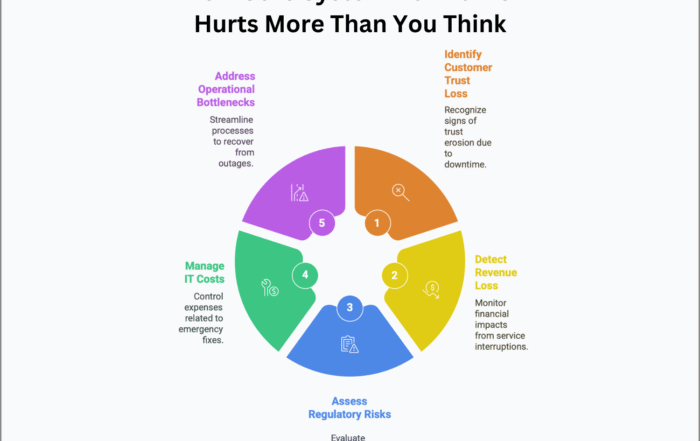
On March 13th, 2023, we published an article titled “The End of Banking as We Know It.” In the article, we predicted that “at least 50% of banks in the USA alone won’t be around in 3-5 years.” This time frame might have been underestimated. Why?
I recently attended the four-day Abundance 360 Summit, a visionary event where experts from various industries discussed the future of technology and its impact on our lives. Topics included artificial intelligence, exponential technologies, longevity, and a moonshot mindset. The lineup of speakers offered valuable insights into the rapidly evolving world of technology.
Notable Speakers and Their Topics
- Emad Mostaque, CEO, Stability AI: “Welcome and Opening”
- Alexandr Wang, Founder & CEO, Scale AI: “The Industrialization of AI”
- Andrew Ng, PhD, Managing General Partner, AI Fund; Founder, DeepLearning.AI: “Building the Next AI Unicorn”
- Rana el Kaliouby, PhD, Deputy CEO, Smart Eye: “Empathy & Ethics of AI”
- Hon. Gilman Louie, CEO, America’s Frontier Fund: “How AI will Shape the Futures of the US & China”
- Sal Khan, Founder & CEO, Khan Academy: “The Future of Education”
- Jacqueline Novogratz, Founder & CEO, Acumen: “Abundance and the Muscular Practice of Hard-Edged Hope”
- Palmer Luckey, Founder, Anduril: “Rebooting the Arsenal of Democracy”
- Mike Davies, Senior Principal Engineer, Intel Neuromorphic Computing Lab, with Stacey Schulman, VP, Edge Computing Group, Intel: “NeuroMorphic Computing”
- Mark Hyman, MD: “Functional Medicine Leader, Educator, Advocate Young Forever”
These thought-provoking discussions offered a glimpse into the near potential of converging technologies and their transformative power in shaping the future. But what do I mean by “converging technologies”? Let’s explore the concept from the beginning.
Linear Progression of Technology: From Stone Age to Transistors
For most of human history, technological advancement followed a linear progression. Innovations like the wheel and the printing press occurred at a relatively slow, steady pace. This changed with the invention of the transistor in the late 1940s, marking a major turning point in technological growth.
Exponential Growth: Digitization and Moore’s Law
The rapid growth of technology has been astounding in recent years, fueled by the digitization of various technologies, allowing them to follow a logarithmic curve, such as Moore’s Law. Formulated by Gordon Moore in 1965, Moore’s Law posits that the number of transistors on a microchip doubles approximately every two years, leading to an exponential increase in computing power.
This exponential growth is explored in depth in the book “The Future Is Faster Than You Think” by Peter H. Diamandis and Steven Kotler. The authors delve into how the convergence of different exponential technologies is causing even faster acceleration and transforming various aspects of our lives.
Convergence of Exponential Technologies: Accelerating Innovation through Synergy
We are now witnessing the convergence of these exponential technologies. Notable examples include:
- Artificial Intelligence (AI) and Robotics: Intelligent machines that learn from their environments and adapt to new situations.
- Biotechnology and 3D Printing: Methods for bioprinting tissues and organs, addressing organ transplantation shortages.
- Internet of Things (IoT) and Blockchain: Secure, decentralized data sharing among connected devices.
- Renewable Energy and Energy Storage: Sustainable, reliable energy solutions through advanced storage systems.
- Virtual Reality (VR) and Augmented Reality (AR): Transforming industries through immersive experiences.
LLM and AI Technologies: Accelerating the Convergence
With the advent of large language models (LLMs) like ChatGPT 4.0 and other advanced AI technologies, we are witnessing unprecedented growth and connectivity. These LLMs generate human-like responses to complex questions, making them invaluable for businesses, researchers, and individuals. This impact is similar to what Mosaic did for the internet, providing an interface that spurred countless innovations.
Implications for Banks and Credit Unions
The rapid growth of technology presents challenges and opportunities for banks and credit unions. Traditional financial institutions must adapt by embracing digital transformation and leveraging new technologies to stay competitive. Failure to do so could result in obsolescence or loss of market share to more agile competitors.
Examples of Converging Technologies in Banking and Finance
- AI and Big Data: Improved risk management, fraud detection, and customer service.
- Blockchain and Cryptocurrency: Faster, more secure financial transactions.
- Robotic Process Automation (RPA) and Cloud Computing: Automating tasks and streamlining operations.
- IoT and Mobile Banking: Smart devices facilitating seamless banking experiences.
- Biometrics and Cybersecurity: Enhanced security for digital banking platforms.
What Can Banks and Credit Unions Do?
To thrive in the age of exponential technology, banks and credit unions must:
- Embrace digital transformation
- Foster innovation
- Develop new business models
- Focus on security and compliance
By leveraging the power of converging exponential technologies, banks and credit unions can innovate, improve customer experiences, and stay competitive in a rapidly changing market. At Core System Partners, we help financial institutions navigate digital transformation, enabling them to harness these technologies to drive innovation and maintain a competitive edge.
Found this article interesting? Check out these three related reads for more.
- Exponential technologies disrupting the banking industry
- Cloud computing in core banking security – The future of banking technology
- Series (10/10): Why core banking transformations often fail – Poor governance
#CoreBankingTransformation #BankingFuture




